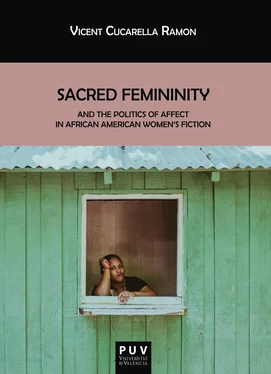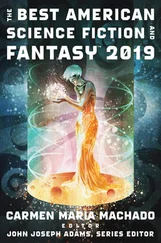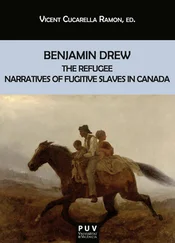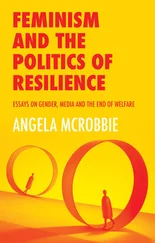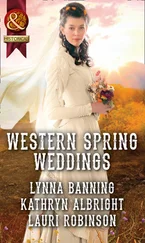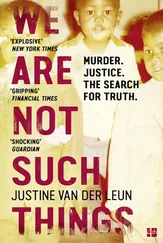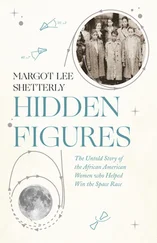Considering that African American women started to leave fictional testimonies in the nineteenth century, I have chosen a distinctive novel for each century—19th, 20th and 21st—to see the way in which these black women writers have modeled the concept of spirituality and the Christian creed from the beginning until the present. Each novel, I propose, represents its own century by showing the way in which the modulation of spirituality, mainly through the use of the American jeremiad that holds forth in each of them along three centuries, follows a (black) cultural pattern and a legacy of specific aesthetics. Yet, and although the American jeremiad envisions three steps to acquire an epistemological value in the United States, the third novel I offer for analysis breaks away from this train of thought and therefore reveals the pitfalls of the jeremiad rhetoric tradition and, ultimately, interrogates the legitimacy of spirituality as a means of empowering.
If spirituality links The Bondwoman’s Narrative, Moses, Man of the Mountain and A Mercy following the cultural path that the American jeremiad traced, I also argue that this spirituality that Crafts, Hurston and Morrison uphold in their narratives is unrelentingly bent on affect and inclusion. Indeed, and stemming from the affect theory that Silvan Tomkins first introduced in his seminal book Affect Imagery Consciousness (1962), I consider that a feminine spirituality and a feminine vision of affect as proposed by Barbara Tomlinson, go hand in hand in the novels I intend to analyze. These politics of affect have gained momentum lately due to a new and feminist reading that thinkers like Tomlinson, Sarah Ahmed, Melissa Gregg or Megan Watkins have impinged on it. In this sense, Tomlinson’s book Feminism and Affect at the Scene of Argument has proven highly illuminating in my attempt to grasp the novels’ affective traces since they succeed in linking black women’s subjectivity by modeling “the matter and matters of affect into an ethical, aesthetic and political task all at once” (Gregg and Gregory 3). In the book, Tomlinson proposes a new way of reading novels— beyond their understanding as “political tools” (4) as she states—within the affective modes that stem from them. This is the way, she further asserts, to transform the terms of reading and to authorize feminine feelings as capable of creating a discourse of rebirth. Affect serves to elaborate alternative modalities of belonging and to privilege different ways for self-assertion. Deeply linked with spirituality, Brian Massumi, in Parables for the Virtual: Movement, Affect, Sensation (2002), posits affect as what escapes our attention, and links its importance to a spiritual mode of representation since it facilitates an “ontological emergence that is released from cognition”, and rather opts for uniting subjectivities through a shared “codified emotion” that brings forth an “autonomy of affect” (35). Hence, and taking this into account, these three novels, written by (black) women and in which women figure prominently as the main characters, make for an interesting reading to authenticate the existing link between feminine spirituality and a feminist side of affect.
In my reading, Hannah Crafts’s The Bondwoman’s Narrative (1857), Zora Neale Hurston’s Moses, Man of the Mountain (1939) and Toni Morrison’s A Mercy (2008), elucidate the way in which African American women have developed the interconnection between their specific mode of spirituality to demand and/or criticize their recognition and values with the affective bonds that the characters disclose. The subsumed ethics that accompany their request is postulated according to a feminized version of the jeremiad rhetoric tradition that is at the core of each novel. However, as it will be seen, the Christian creed alongside the jeremiadic tone of its demands as cultural outlets will be refracted in the 21st century due to its eventual failure and its factual shortcomings. Crafts, Hurston and Morrison reconfigure in their fictions the sacred ethos with affective bonds that are deemed crucial not only to overcome suffering but to recognize their black women characters as human beings. The matching pact with religion and affect unite their narratives although in different ways and with different purposes attempting to make a contribution to their own culture.
It is my contention that Crafts, Hurston and Morrison sought to reshape the Christian creed trying to legitimize their own sense of spirituality so that it could unite them in the effort present. This train of thought can be seen through the twentieth century and even up to the twenty-first century. Besides, I would like to demonstrate how these novels display the way in which the politics of affect play an important—though sometimes divergent—part in black women’s appraisal of Christian religion. These versions of African American women’s spirituality are infused with an affective inclusion that stems from a collective vision of black Christianity. A vision that seeks to unite that social and cultural pugnacity that helps them erect a distinctive mode of representation in the United States Through the analysis of these three novels I seek to expose the links that a personal sense of spirituality together with a feminist view of affect interplay in the reconfiguration of the black female self. Both spirituality and affect intermingle in the three narratives to pursue the cultural continuum of the African American jeremiad contemplating in such a way new ways of portraying the representation of the black female self. However, I emend this rhetoric tradition by showing how the last stage of the jeremiad, as envisioned in its conception, fails to live up to the sociocultural ideas for African American women in the 21st century, a move I will try to illustrate through Toni Morrison’s vision. The takeaway of this train of thought points to measure the ways in which spirituality and affect validate the way in which African American women have and have been represented along three centuries. The analysis of the third novel interrogates such cultural moves and destabilizes such conceived notions aiming to open new windows of knowledge and new readings.
I devote Chapter 1to examining the concept of spirituality which helps African American women in their archaeological search of a black female aesthetic that can overshadow the image of the sexual female self that the racist theories of the antebellum America socially conveyed. To such an attempt, black women weaved an interrelated web of affect and spirituality that produced a new conception of black femininity. Besides, the study of the affective turn for black women’s sacredness, following Gregory J. Seigworth & Melissa Gregg (2010), Sarah Ahmed (2004), Barbara Tomlinson (2010) or Berlant (2004), also develops a specific ethic of care that can encompass healing in national terms. This bond of feminine solidarity that emphasizes the relational mode of behaving of black women links their readings of sacredness to a collective experience of healing which showcases their shared warrant to cater for each other. Instead of relying on the political force encapsulated within the religious discourse, black women enlarge the religious creed to foster new subjectivities and to create their own cultural language.
Chapter 2is devoted to the study of how a personal spirituality that draws on a committed Christian belief is used by the first fugitive black female slave in writing a novel. The discovery of The Bondwoman’s Narrative in 2001 by Henry Louis Gates Jr. marked a turning point in the African American literary canon. The novel has generated a considerable amount of controversy since many critics argue that it is vaguely possible that the novel be written by a fugitive female slave. However, and considering Professor Gregg Hecimovich’s future proofs that will demonstrate so worthy, I analyze The Bondwoman’s Narrative taking into account the conception of the sacred femininity that the nineteenth-century black Christianity offered to African American women. The chapter is divided into three parts. The first one elaborates on the idea of African American Christianity and black women over the course of the nineteenth century and it serves as the background in which Crafts’s reconfiguration of black Christianity shapes up the conception of the black female slave’s sacred femininity towards freedom. Following this historical framework I shortly introduce the whereabouts that have brought about Hannah Crafts’s novel to the African American literary canon ever since it was discovered.
Читать дальше
